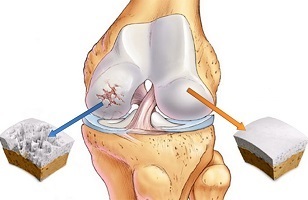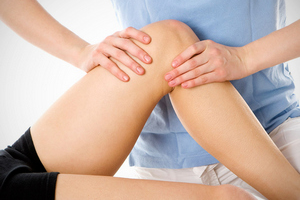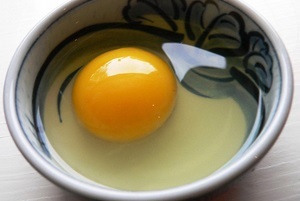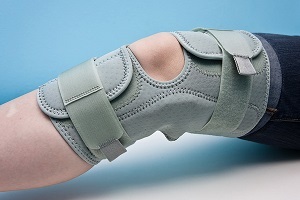
Arthrosis of the knee joint is one of the most common diseases of the joints and is second only to coxarthrosis in terms of the severity of the disease.
According to the latest research, this disease affects one in five adults on earth. In the material, we tell you what the symptoms of the disease are and how to treat them properly to avoid complications.
Reasons for appearance
Every day, a person’s knee joints are exposed to stress because exercising while resisting full body weight. Over time, the cartilage tissue wears out, leading to changes in the joints. This is why people of all ages can experience arthrosis of the knee joints.
In addition, there is a risk group that includes people:
- overweight;
- suffers from osteoporosis;
- with hereditary disorders;
- are elderly;
- works in special fields with a high workload;
- has metabolic disorders;
- there is a deficiency of microelements in the body; spinal cord injury
- ;
- athletes.
It should be borne in mind that this disease develops quite slowly, and it is very important to seek medical advice in time if the main symptoms are found.
This will avoid possible complications such as disability in the future.
Symptoms of knee arthrosis
To pinpoint the disease, just pay attention to the symptoms - these are very common in arthrosis. These are the following:

- Pain or discomfort after sleep (or if you try to get up after sitting for a long time).
- Pain in the knee for a long time while standing.
- Climbing stairs - burning sensation.
- Night pain or discomfort after training.
- Feeling of weakness and “buckling” in the lower extremities.
One of the most important symptoms is pain and stinging in the knee area.
However, the disease itself does not appear “suddenly”: such feelings can grow for months or years, and at first they will only be disturbed with an increased load, and then the pain will be felt even at rest.
But it is worth noting that the symptoms vary depending on the extent of the disease.
Let's take a closer look at each option.
Level I
This degree of osteoarthritis is almost asymptomatic, but there are several factors that characterize this stage of the disease:
- feeling of fatigue in the limbs;
- is a decrease in mobility that usually occurs after sleep.
If there is pain, it is almost invisible. At this stage, it is very difficult to diagnose the disease, so it cannot be done without an X-ray: arthrosis will manifest as a small unevenness in the surface of the tissues and bones.
Grade II
At this "stage", the symptoms are brighter. The pain can appear even with a slight strain on the legs, and over time, such feelings can occur with a simple movement. The discomfort only disappears after a long rest.
In addition, symptoms such as:
- crunch when moving;
- changes in the bones of the joint;
- synovitis;
- inability to bend the leg.
Level III
A characteristic feature of this degree is severe pain that is no longer dependent on the load: joints can be disturbed even at night without movement.
Mobility is also impaired - one cannot bend the leg at the knee. Weather sensitivity can also be observed.
Diagnostic and follow-up principles

The doctor, after listening to the doctor, examines the appearance of the knee and assesses its mobility. The patient is then sent for an X-ray and several images can be taken during the treatment period to allow the dynamics of arthrosis to be assessed. In some cases, MRI or tomography is prescribed.
If research is needed to correctly identify the cause of arthrosis and to differentiate it from other diseases with similar symptoms.
Thetreatment usually includes
- Medication.
- Massage and manual therapy.
- Surgery.
- Exercise therapy and other methods of rehabilitation therapy.
The main goals of treatment are:
- elimination of pain;
- restoring the ligament device and destroying cartilage;
- increased range of motion in the joint.
Massage procedures, physiotherapy, and even proper nutrition are important. If you see a doctor too late, or none of the above methods help, surgery is prescribed: implantation of an endoprosthesis.
Treating Arthrosis - Choosing Methods and Tools
There are currently groups of drugs that are prescribed at the initial stage to treat arthrosis:
- NSAIDs - non-steroidal anti-inflammatory drugs;
- chondroprotectors;
- medicated ointments;
- compressor devices.
NSAIDs are designed to eliminate pain and inflammation. And only after the pain syndrome is reduced can further treatment begin.
If the use of non-steroidal medications has not worked, especially if the disease has only progressed, doctors usually prescribe hormonal medications.
However, it is worth noting that due to a number of side effects, such medications are only prescribed during the course of the disease - when fluid accumulates in the joint area. The solution is given up to once every 10 days.
The only group that directly affects the cause of arthrosis is chondroprotectors. They are especially effective in the early stages.
Hyaluronic acid, which is injected into the joint, is also very effective at an early stage. This procedure is not the cheapest, but it helps to wear the cartilage surface.
Ointments are also prescribed when arthrosis is detected - they also reduce the sensation of pain and remove inflammation.
How traditional medicine can help
It should be said at once that traditional medicine methods should not be used alone - they should only be used as an adjunct to medical treatment.
Let's take a look at some things that can help with knee arthrosis:
Dandelion flower
You only need to eat 5 dandelion flowers a day, be sure to rinse with boiled water. You can also make tinctures: take 5 dark glass bottles, fill 50% with flowers, fill the container with triple cologne up to your neck. Insist for a month and then wipe your knee with the infusion.
Lapping

This is a compound that needs to be rubbed into the knee joint regularly.
It is very easy to prepare such a composition: take the egg yolk, mix with 1 tablespoon. l. turpentine, add 1 tsp. Apple vinegar. All ingredients should be mixed and left overnight.
Lubricate your knees every night and fill them with a wool scarf.
In addition, it is very important to wash the applied mixture thoroughly in the morning. To relieve symptoms, you should use this method for 2-3 weeks.
burdock
According to folk influences, 3-4 large burdock leaves should be attached to the sore knee and wrapped in a bandage. Repeat this manipulation for at least a week to relieve pain. And to enhance the effect, the joints should be lubricated with cinquefoil oil.
Celandine juice
Soak a piece of cloth in juice and place it on the affected knee. After an hour, brush with vegetable oil. Repeat the procedure for a week.
Harpagophytum root
Take 2 tablespoons. l. means pour into a thermos, pour 1 liter of boiling water, leave for two hours. Take at least 3 glasses a day warm.
Choose a knee pad for arthrosis
It is often recommended to wear special knee pads for osteoarthritis of the knee joint, which both reduce the feeling of discomfort and have a therapeutic effect. If you use it for a short time, you'll usually see improvements like:
- the inflammatory process is reduced;
- the swelling disappears;
- analgesia;
- reduces pressure on joints;
- the work of the musculoskeletal system has stabilized.
It is very important to choose the right model that will be effective when worn. To do this, first look at the types of knee pads available:

- Open.Essential for those who experience pain after an injury or minor pain.
- Flexible productswith stiffeners. This type of knee pad is better suited for those who have pain while squatting, climbing, or descending stairs.
- Open-formknee pads with adjustable tension. Such products are ideal after the operation.
- Closed type- used when the source of the pain is not clear, ie it is not concentrated in any particular place. Minimizes the load on the joints.
- The magnetic appearance of the knee padis characterized by the presence of a special magnet, which has a warming effect and improves blood circulation.
- Articulated.Considered a universal option. It is used to minimize injury, post-arthrosis pain.
In addition to the type, the material from which the knee pad is made must also be taken into account. So you can create elements like this:
- Animal hair.These products warm, absorb moisture, reduce inflammation and improve tissue blood circulation.
- Polyester.Knee pads made of this artificial fabric are very comfortable, reliable, but not warming and quite expensive.
- Cotton.Nice to wear, waterproof. True, there are also disadvantages: lack of flexibility and fragility of use.
- Nylon.Knee pads made of this material are considered to be the most durable, fitting nicely to the body. But there is a downside - it is an artificial material.
- Neoprene.Although it is an artificial fabric, this material has an elastic and warming effect. There is also a downside - wearing such knee pads can cause allergies.
But it is important not only to choose the right knee pads, but also to use them. Doctors follow a number of important recommendations:
- you should not wear them for more than three hours a day;
- The duration of wearing depends on the degree of arthrosis - your doctor will tell you more about this;
- if you have any allergies, you should urgently see a doctor who will prescribe another dressing;
- it is impossible for the drug to tighten the joints strongly;
- Wash the knee pads by hand, the water temperature should not exceed +40 degrees.
In conclusion, a healthy lifestyle should not be neglected - in which case the body should function as it should. If you feel pain in your joints, you should see a doctor urgently to make the correct diagnosis.



























